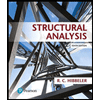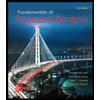Q1) Choose the correct answer.. 1-The first stage in traffic engineering studies is.. A. Traffic volume studies B. Spot speed studies C. Speed and delay studies D. Origin and destination studies 2. For the movement of vehicles at an intersection of two roads, without any interference, the type of grade separator generally preferred to, is A. Partial Cloverleaf В. Тrитpet C. Diamond Interchange D. Full Cloverleaf 3. Pick up the incorrect statement from the following.. A. The speed on urban roads 120-130 km/hr. B. There is no control on the urban roads Access. C. The urban roads are use for long distance. D. Level of service for urban roads A and B. 4. The main objective of traffic volume studies... A. To decide priority for improvement of roads. B. For geometric design. C. For computing roadway capacity. D. To plan traffic operation. 5. The minimum space headway increases with A. Increase in length of vehicle. B. Increase in width of vehicle. C. Increase in weight of vehicle. D. Increase in width of pavement. 6. The traffic volume is usually expressed in A. LMV В. РСU C. LCV D. HCV 7. The value of Peak Hour Factor (PHF) should always less than: A. 1.0 В. 0.85 C. 0.90 D. 1.5 8. It is the number of vehicles occupying a unit length of a roadway at a given time. D. Flow rate А. Сарасiгy B. Design Hour Volume C. Density 9. The number of lanes depend on traffic volume and A. Design speed B. Lane capacity C. Shoulder width D. Axle load 10.The Perception Reaction Time (PRT) has four stages, the last stage is: A. Emotion B. Response C. Identification D. Decision
Q1) Choose the correct answer.. 1-The first stage in traffic engineering studies is.. A. Traffic volume studies B. Spot speed studies C. Speed and delay studies D. Origin and destination studies 2. For the movement of vehicles at an intersection of two roads, without any interference, the type of grade separator generally preferred to, is A. Partial Cloverleaf В. Тrитpet C. Diamond Interchange D. Full Cloverleaf 3. Pick up the incorrect statement from the following.. A. The speed on urban roads 120-130 km/hr. B. There is no control on the urban roads Access. C. The urban roads are use for long distance. D. Level of service for urban roads A and B. 4. The main objective of traffic volume studies... A. To decide priority for improvement of roads. B. For geometric design. C. For computing roadway capacity. D. To plan traffic operation. 5. The minimum space headway increases with A. Increase in length of vehicle. B. Increase in width of vehicle. C. Increase in weight of vehicle. D. Increase in width of pavement. 6. The traffic volume is usually expressed in A. LMV В. РСU C. LCV D. HCV 7. The value of Peak Hour Factor (PHF) should always less than: A. 1.0 В. 0.85 C. 0.90 D. 1.5 8. It is the number of vehicles occupying a unit length of a roadway at a given time. D. Flow rate А. Сарасiгy B. Design Hour Volume C. Density 9. The number of lanes depend on traffic volume and A. Design speed B. Lane capacity C. Shoulder width D. Axle load 10.The Perception Reaction Time (PRT) has four stages, the last stage is: A. Emotion B. Response C. Identification D. Decision
Chapter2: Loads On Structures
Section: Chapter Questions
Problem 1P
Related questions
Question

Transcribed Image Text:Q1) Choose the correct answer..
1-The first stage in traffic engineering studies is..
A. Traffic volume studies
B. Spot speed studies
C. Speed and delay studies
D. Origin and destination studies
2.For the movement of vehicles at an intersection of two roads, without any interference, the type
of grade separator generally preferred to, is
A. Partial Cloverleaf B. Trumpet
C. Diamond Interchange
D. Full Cloverleaf
3. Pick up the incorrect statement from the following..
A. The speed on urban roads 120-130 km/hr.
B. There is no control on the urban roads Access.
C. The urban roads are use for long distance.
D. Level of service for urban roads A and B.
4. The main objective of traffic volume studies..
A. To decide priority for improvement of roads.
B. For geometric design.
C. For computing roadway capacity.
D. To plan traffic operation.
5. The minimum space headway increases with
A. Increase in length of vehicle.
B. Increase in width of vehicle.
C. Increase in weight of vehicle.
D. Increase in width of pavement.
6. The traffic volume is usually expressed in
A. LMV
В. РCU
С. LCV
D. HCV
7. The value of Peak Hour Factor (PHF) should always less than:
А. 1.0
В. О.85
С. 0.90
D. 1.5
8. It is the number of vehicles occupying a unit length of a roadway at a given time.
D. Flow rate
А. Сарасiry
B. Design Hour Volume
C. Density
9. The number of lanes depend on traffic volume and
C. Shoulder width
D. Axle load
A. Design speed B. Lane capacity
10.The Perception Reaction Time (PRT) has four stages, the last stage is:
A. Emotion
B. Response
C. Identification
D. Decision
Expert Solution
This question has been solved!
Explore an expertly crafted, step-by-step solution for a thorough understanding of key concepts.
Step by step
Solved in 3 steps with 2 images

Knowledge Booster
Learn more about
Need a deep-dive on the concept behind this application? Look no further. Learn more about this topic, civil-engineering and related others by exploring similar questions and additional content below.Recommended textbooks for you


Structural Analysis (10th Edition)
Civil Engineering
ISBN:
9780134610672
Author:
Russell C. Hibbeler
Publisher:
PEARSON

Principles of Foundation Engineering (MindTap Cou…
Civil Engineering
ISBN:
9781337705028
Author:
Braja M. Das, Nagaratnam Sivakugan
Publisher:
Cengage Learning


Structural Analysis (10th Edition)
Civil Engineering
ISBN:
9780134610672
Author:
Russell C. Hibbeler
Publisher:
PEARSON

Principles of Foundation Engineering (MindTap Cou…
Civil Engineering
ISBN:
9781337705028
Author:
Braja M. Das, Nagaratnam Sivakugan
Publisher:
Cengage Learning

Fundamentals of Structural Analysis
Civil Engineering
ISBN:
9780073398006
Author:
Kenneth M. Leet Emeritus, Chia-Ming Uang, Joel Lanning
Publisher:
McGraw-Hill Education


Traffic and Highway Engineering
Civil Engineering
ISBN:
9781305156241
Author:
Garber, Nicholas J.
Publisher:
Cengage Learning